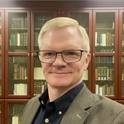Article
The Converging Histories and Futures of Libraries, Archives, and Museums as Seen through the Case of the Curious Collector Myron Eells
Libraries & the Cultural Record
(2011)
Abstract
In lieu of an abstract, here is a brief excerpt of the content:
The etymologies of the words archive, library, and museum reveal the antiquity of these words as well as their semantic evolutions over time. An archive, initially an ancient office building, is now associated with historical records and the places that preserve them. A library, a term once connected with ancient writing material or products, now connotes printed books and the places that provide access to them. And museums, originally places for worshiping the Muses, have become collections of historical, scientific, artistic, or other cultural objects and the places that exhibit them. These evolving meanings suggest a rich history that began soon after communications began to be preserved in writing, some five millennia ago, and continues into the present as libraries, archives, and museums (LAMs) continue to collect, preserve, and provide access to records, books, and other artifacts so that members of each new generation may understand the past and present and prepare for the future.
As LAMs continue to evolve in the digital age, remembering the past is helpful as we prepare for the future. Through the history of one collection, this article explores the period that largely shaped our present forms, functions, and perceptions of LAMs. When modern conceptions of LAMs were nascent, a nineteenth-century collector, Myron Eells, formed a collection of records, books, and artifacts. After his death, Eells's collection was donated to Whitman College, a liberal arts college in the Pacific Northwest, and during the twentieth century his materials were subjected to the emerging and diverging professional practices of the college's library, museum, and archives. The article concludes with a preliminary consideration of how Eells's fragmented collection—and other cultural collections—might become more unified in the digital age. By unifying collections that have been broken up due to the types of materials in them, aggregates of related materials can be restored and the possibilities for discovery, interpretation, and use can be enhanced.
Disciplines
Publication Date
2011
Citation Information
"The Converging Histories and Futures of Libraries, Archives, and Museums as Seen through the Case of the Curious Collector Myron Eells" Libraries & the Cultural Record Vol. 46 Iss. 2 (2011) Available at: http://works.bepress.com/michael_paulus/1/
